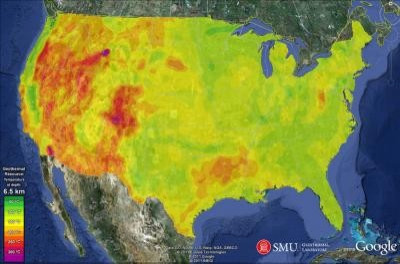Google-funded Research Maps Geothermal Energy in U.S.

Research funded by Google, the power-hungry search engine, concludes that America's geothermal resources could provide 10 times the current power from existing coal plants, according to a report released Wednesday.
The U.S. could potentially generate nearly 3 million megawatts from its geothermal resources, with the use of technology called Enhanced Geothermal Systems - which Google.org invested over $10 million for research at the Southern Methodist University's Geothermal Laboratory. Google.org is the philanthropic branch of Google.
The research comes from SMU professor David Blackwell and geothermal lab coordinator Maria Richards who estimated both amounts and locations of heat stored in the Earth's crust at 35,000 data sites.
Areas of particular geothermal interest include the Appalachian trend (Western Pennsylvania, West Virginia, to northern Louisiana), the aquifer heated area of South Dakota, and the areas in northern Illinois and northern Louisiana. The Gulf Coast continues to be outlined as a huge resource area and a promising sedimentary basin for development.
Once again, SMU continues its pioneering work in demonstrating the tremendous potential of geothermal resources, said Karl Gawell, executive director of the Geothermal Energy Association. Both Google and the SMU researchers are fundamentally changing the way we look at how we can use the heat of the Earth to meet our energy needs, and by doing so are making significant contributions to enhancing our national security and environmental quality.
© Copyright IBTimes 2024. All rights reserved.





















